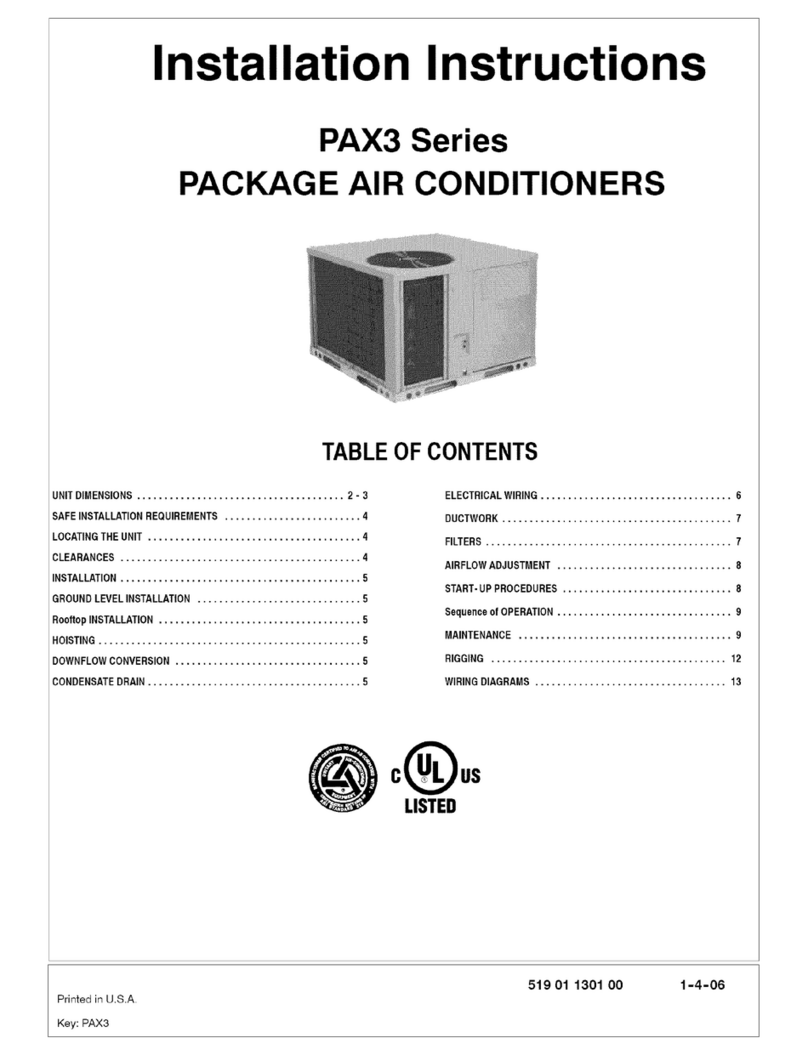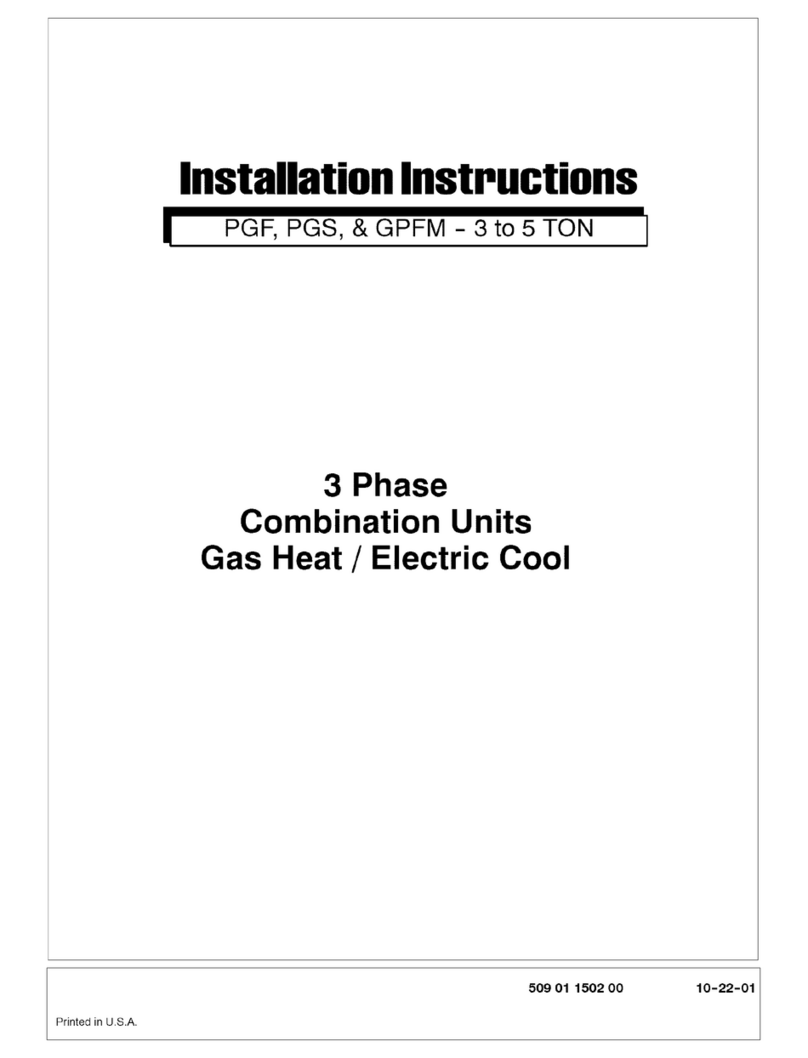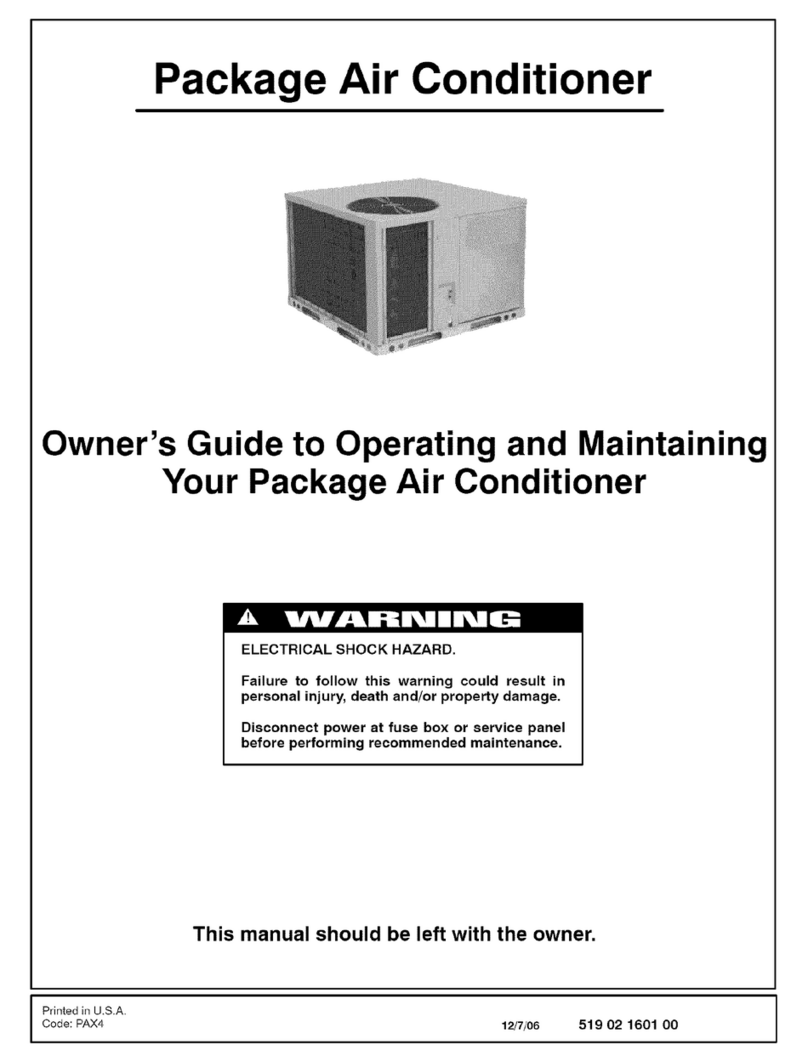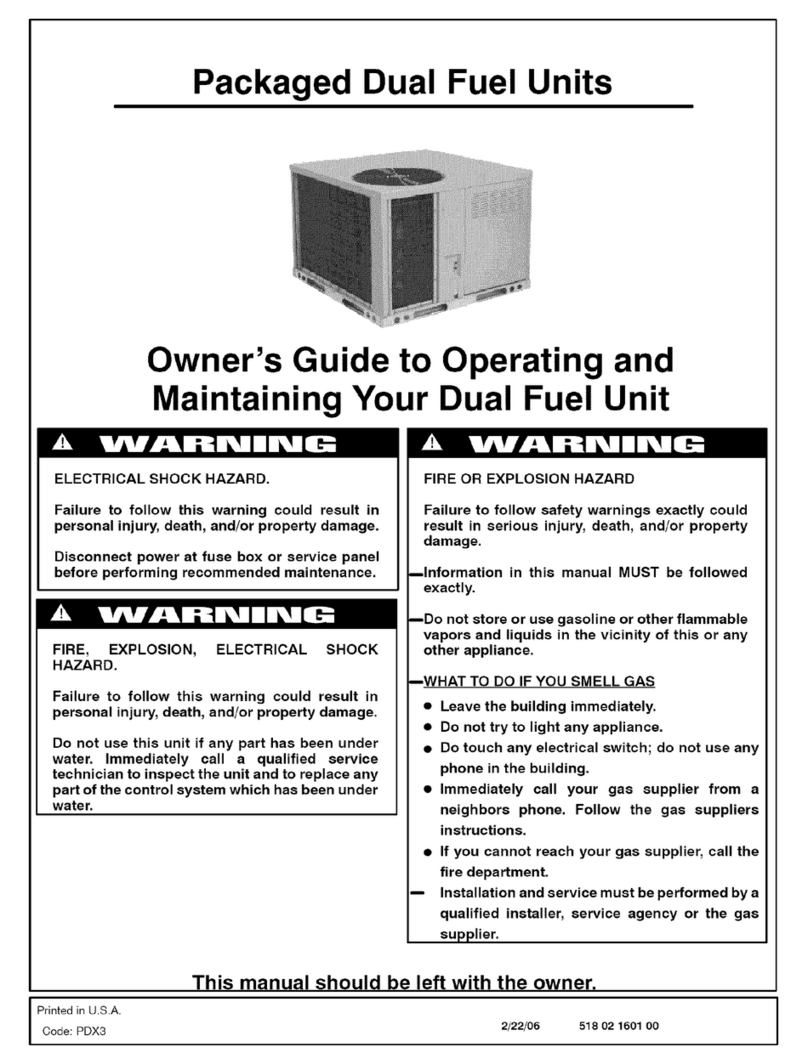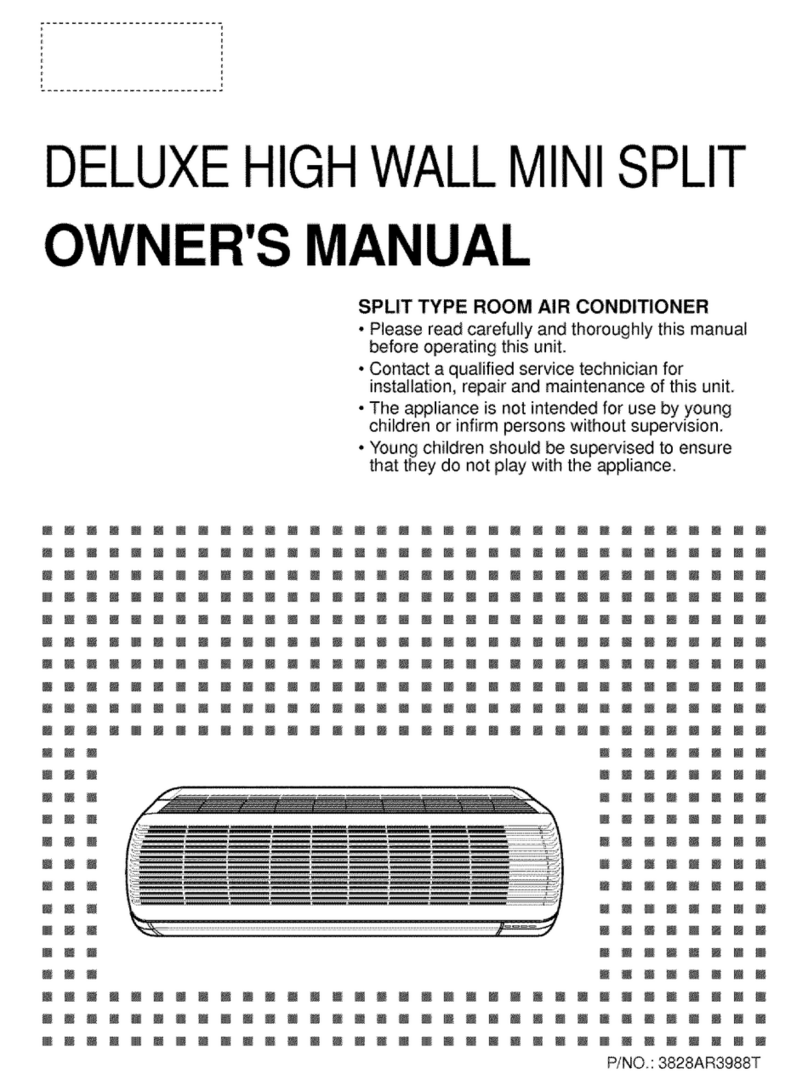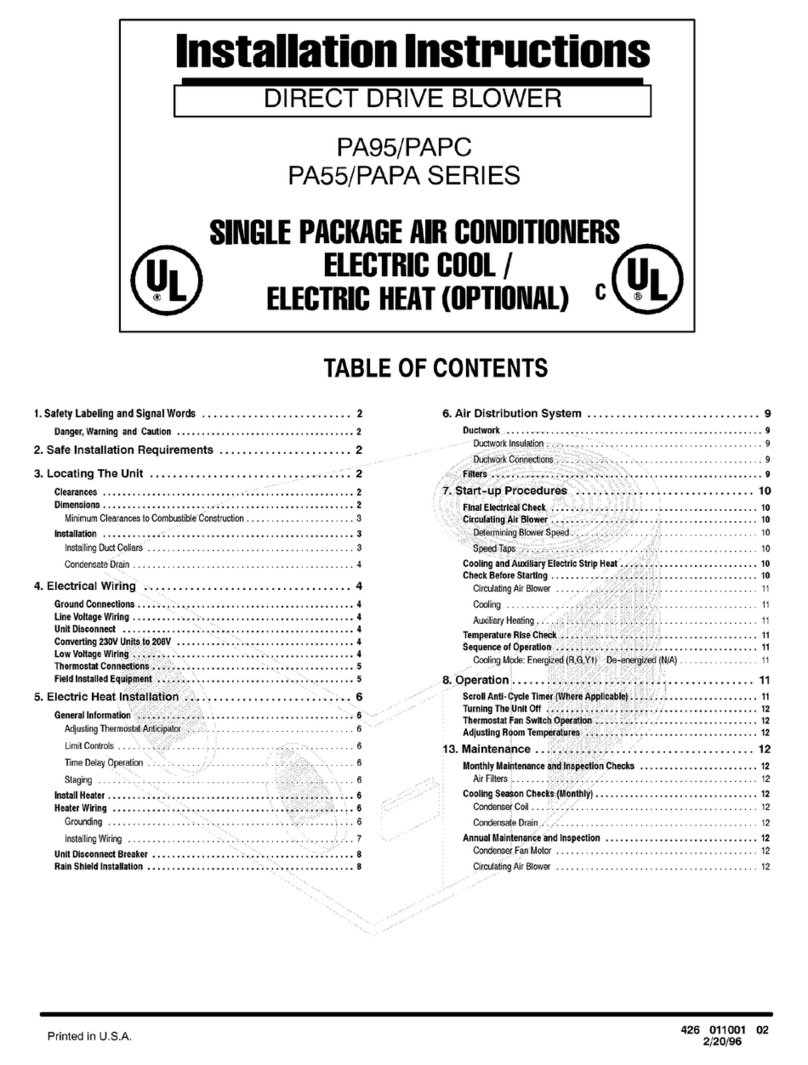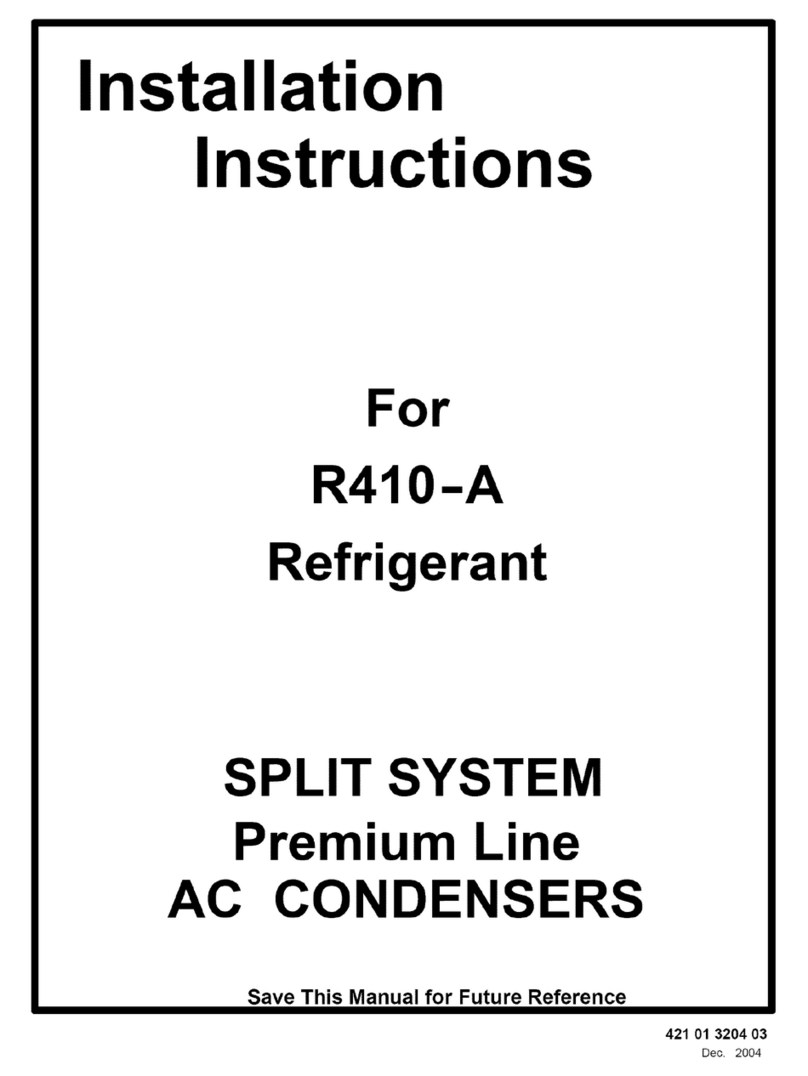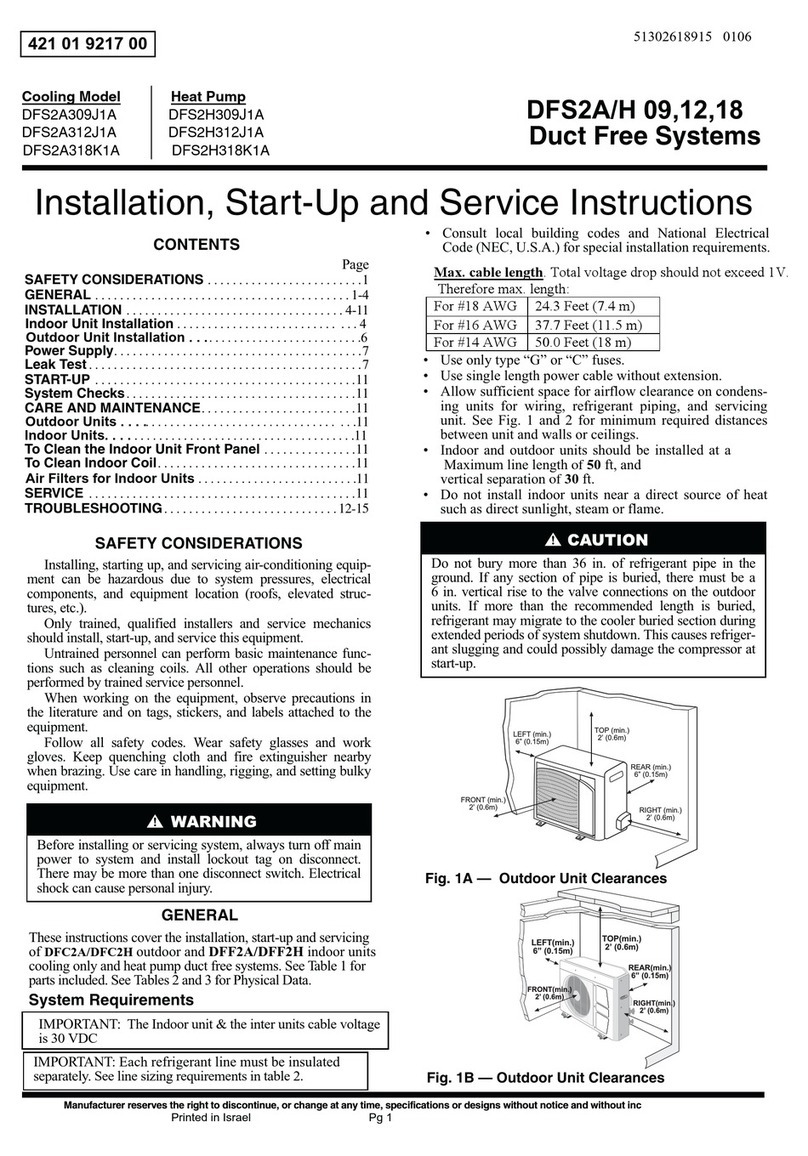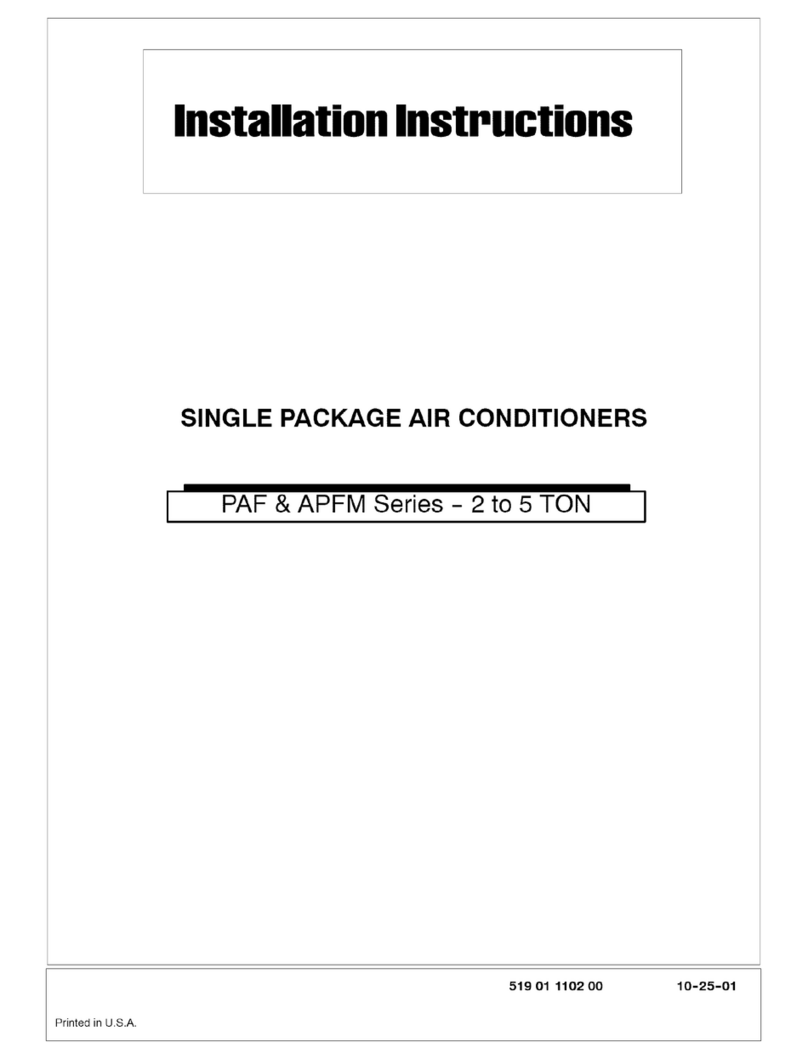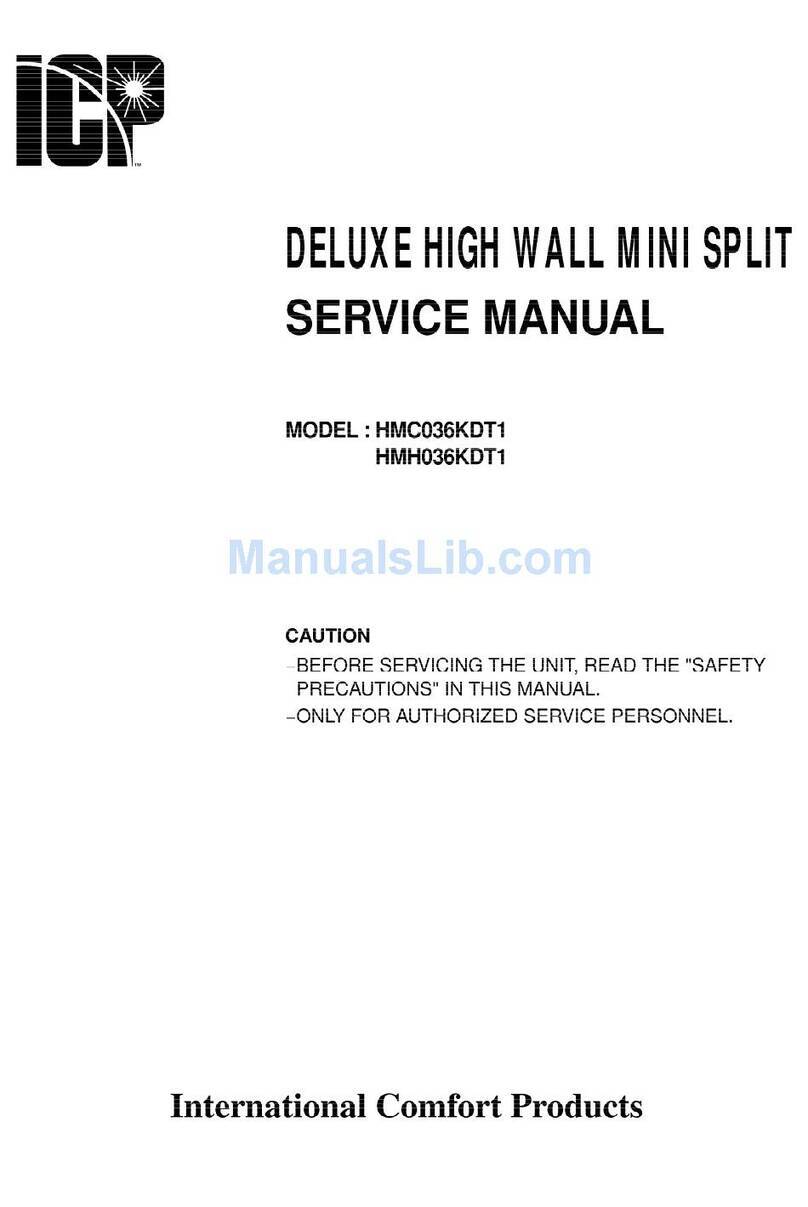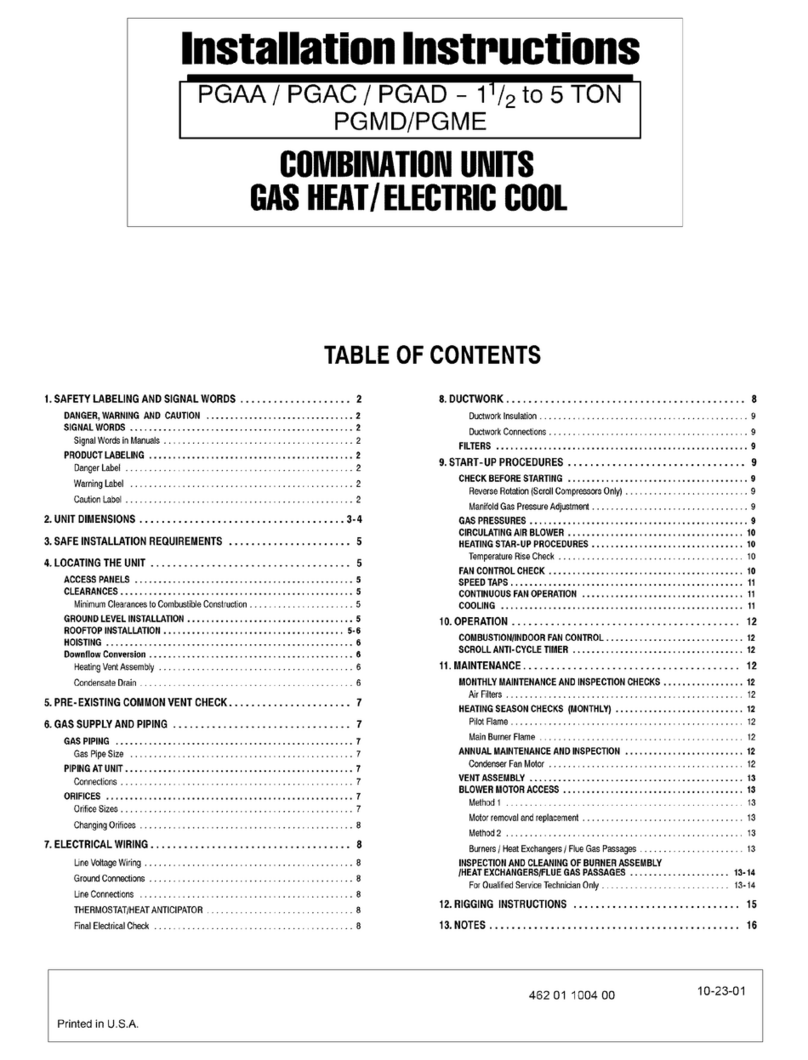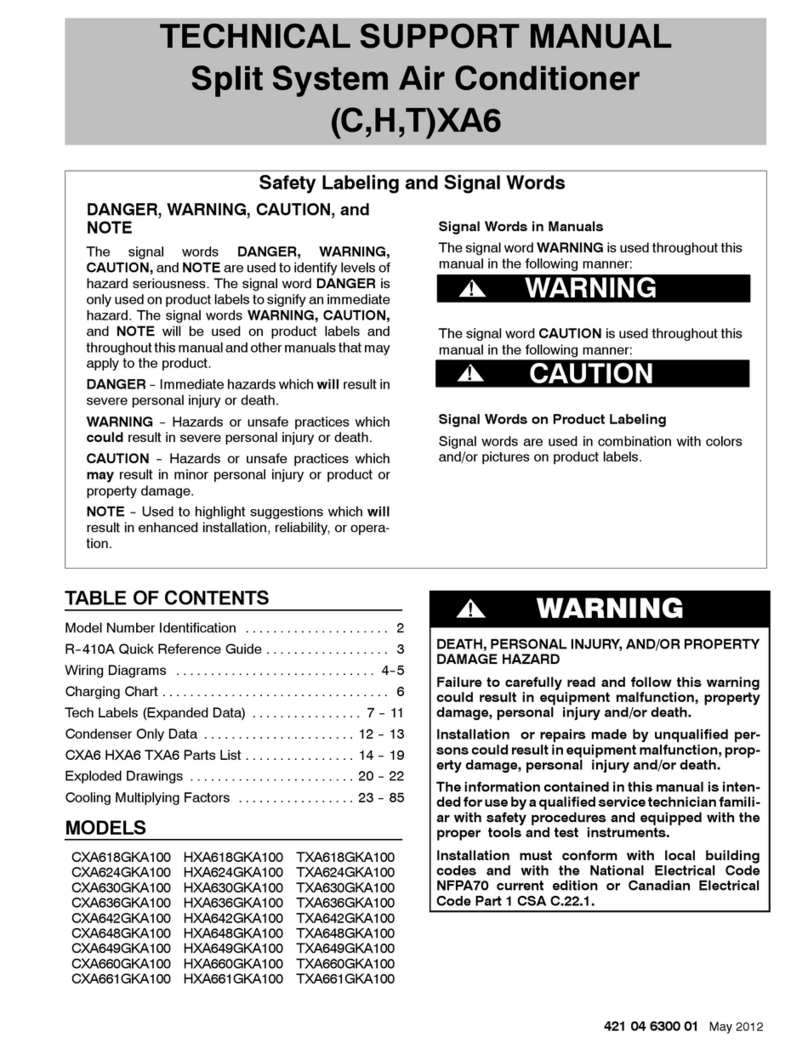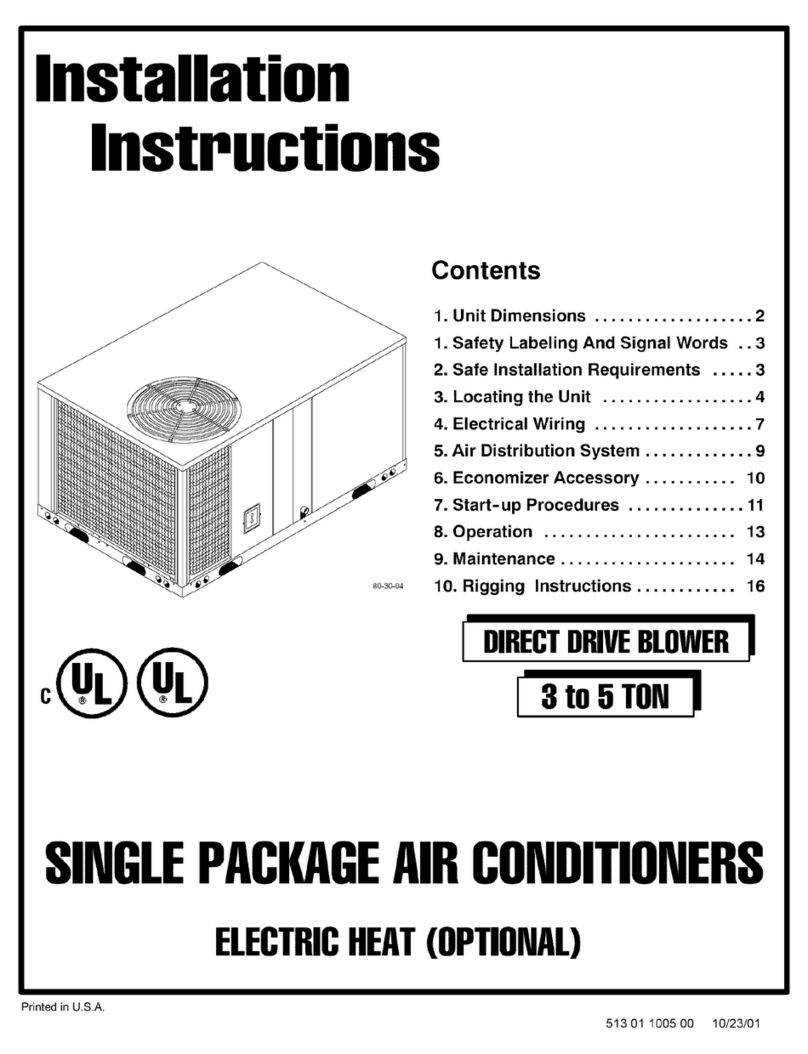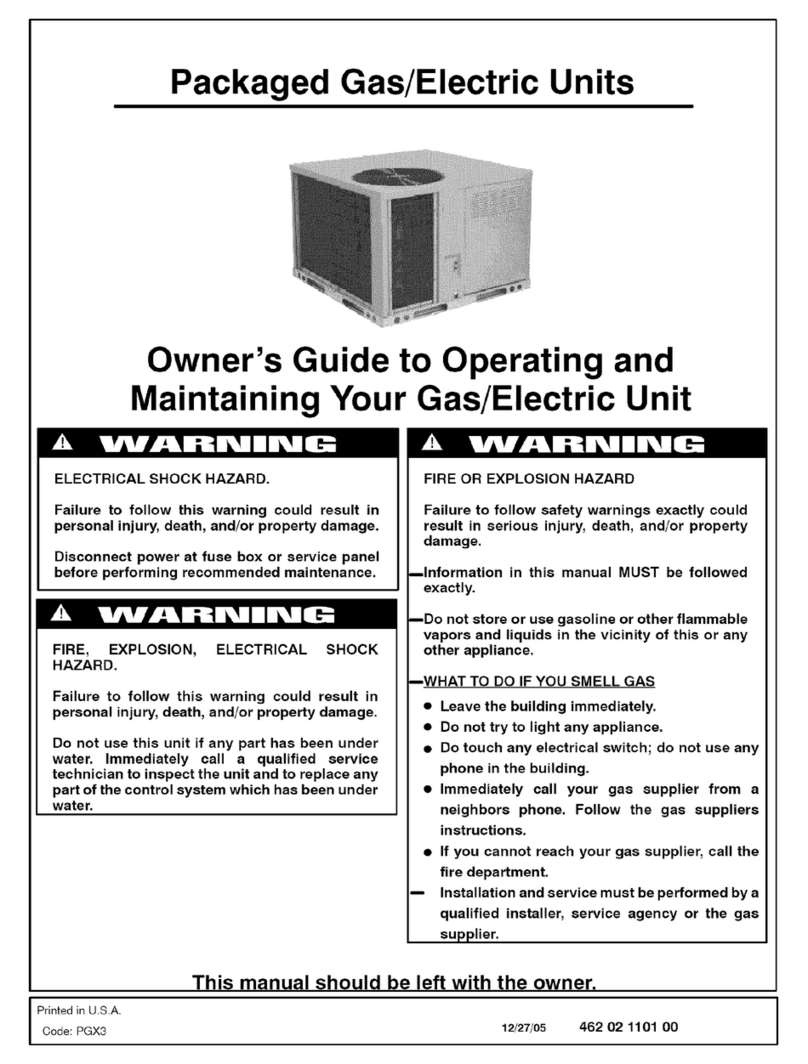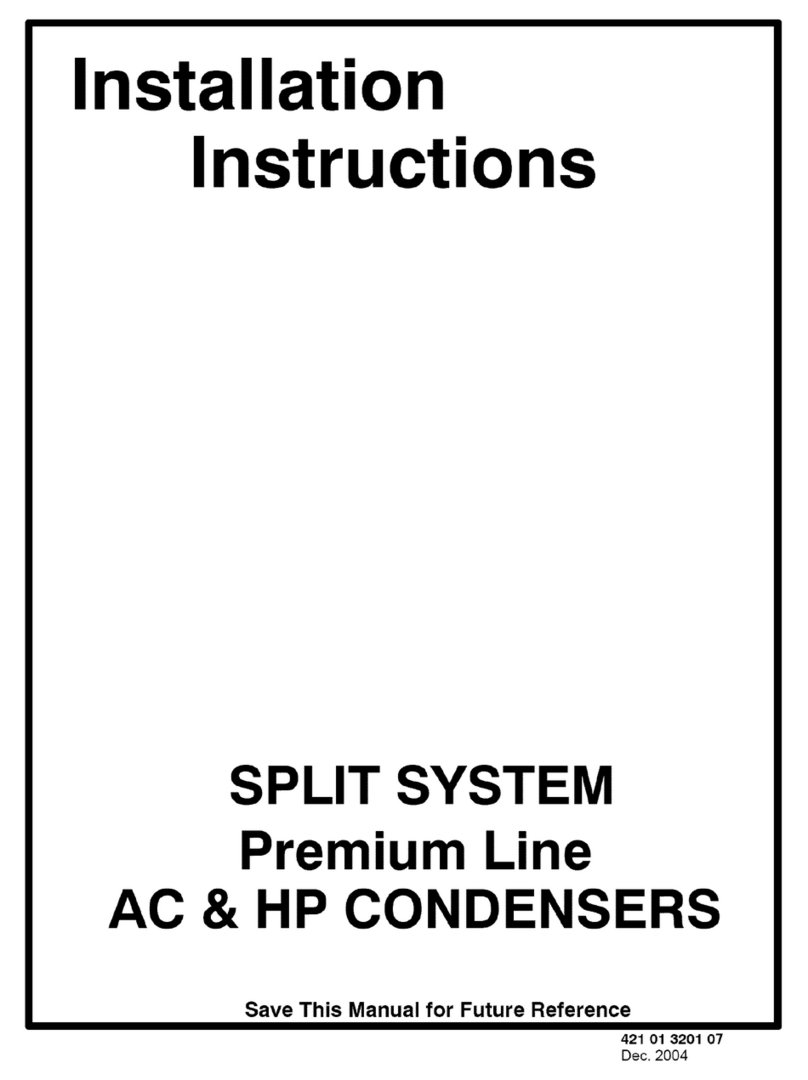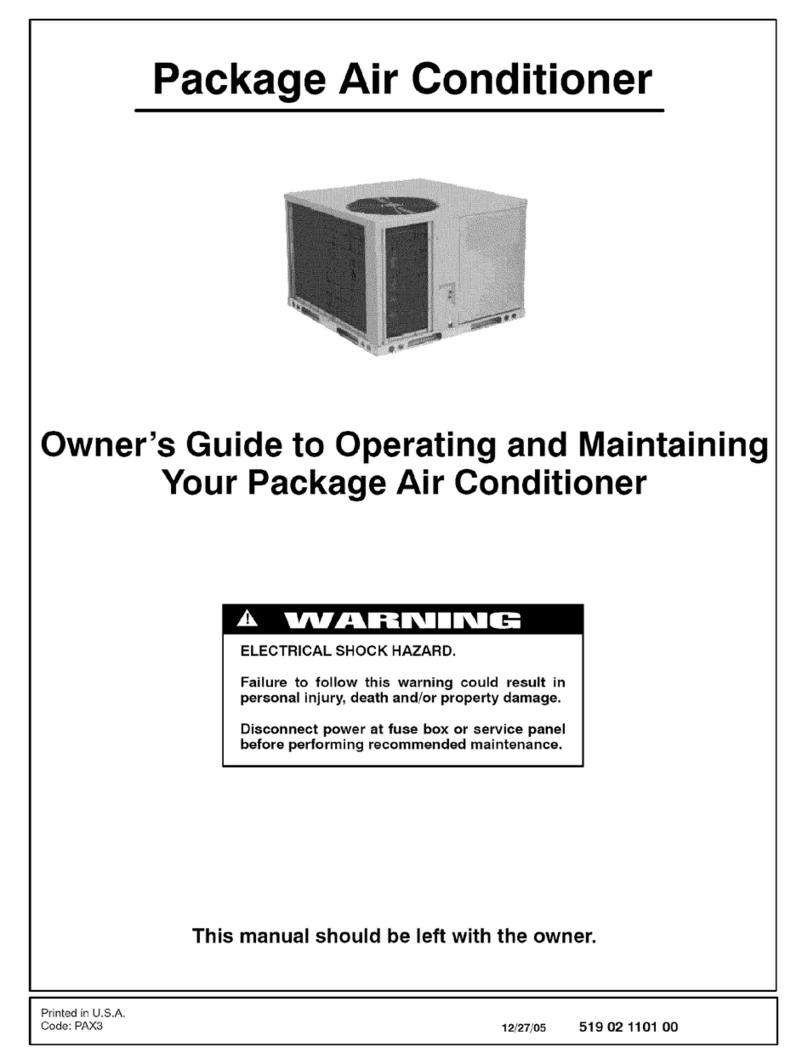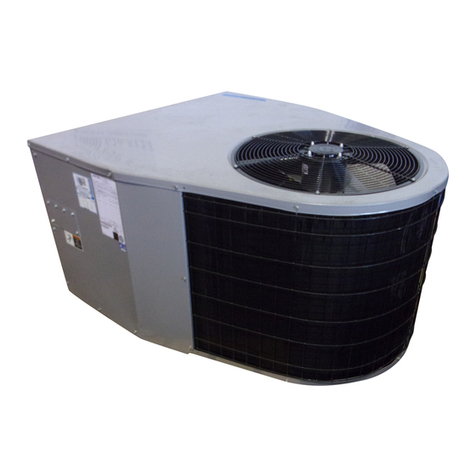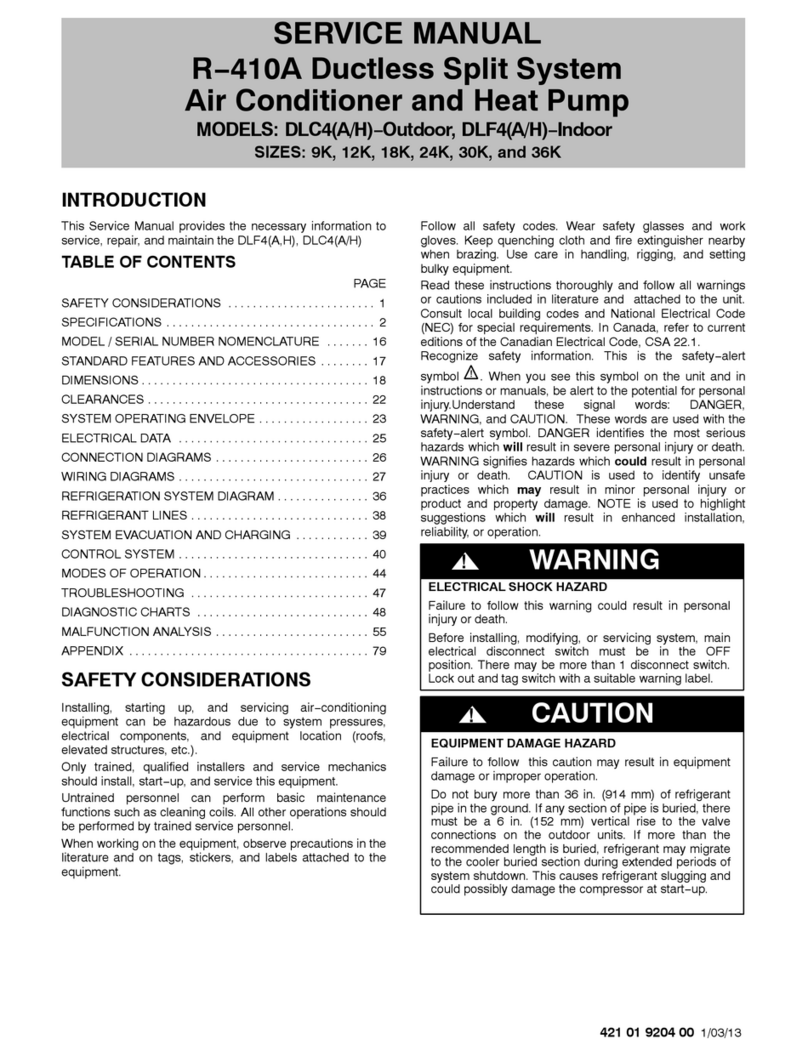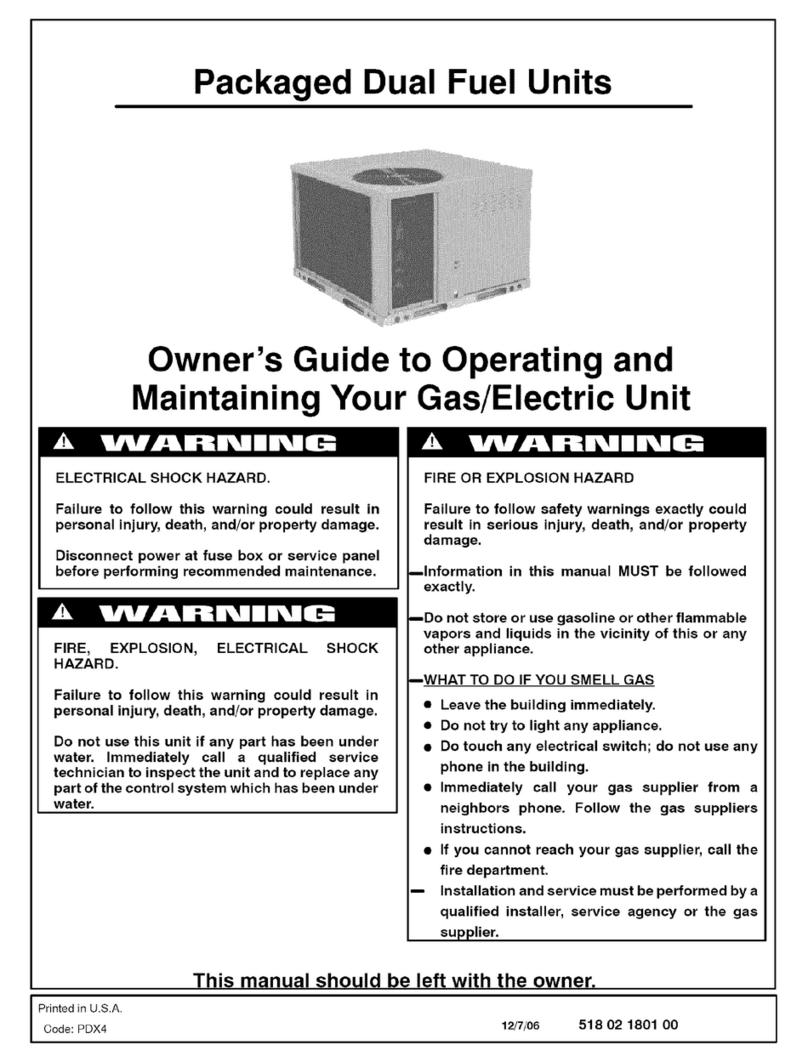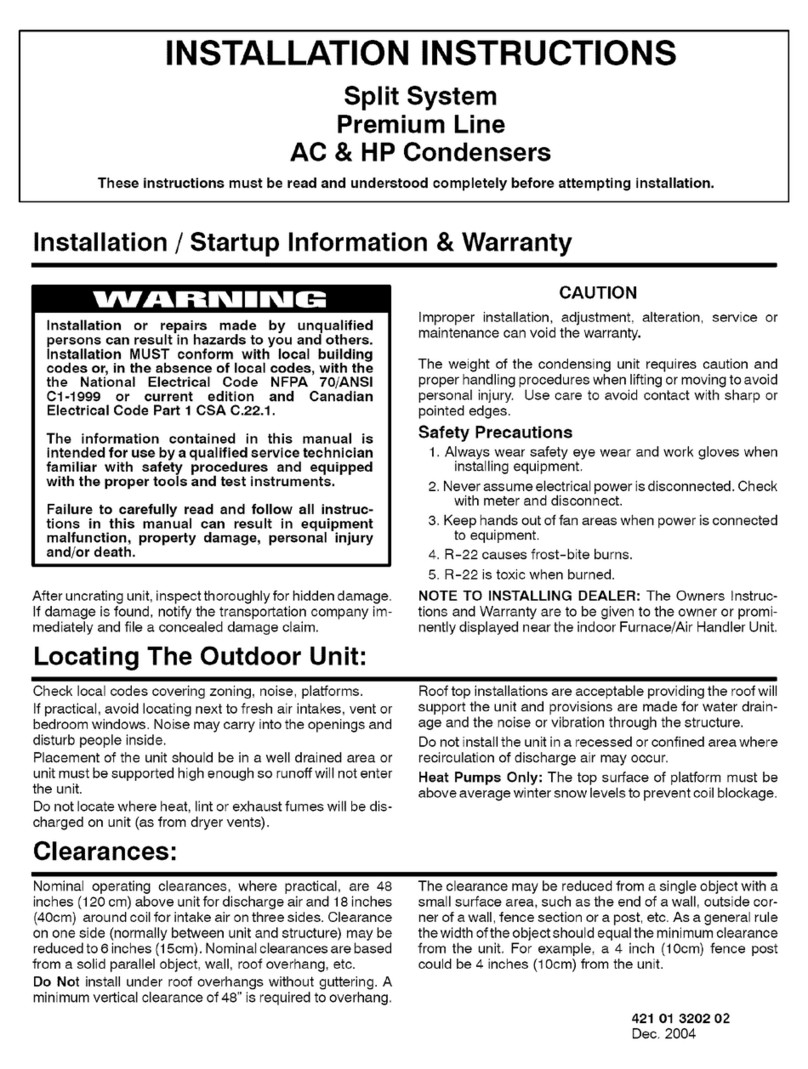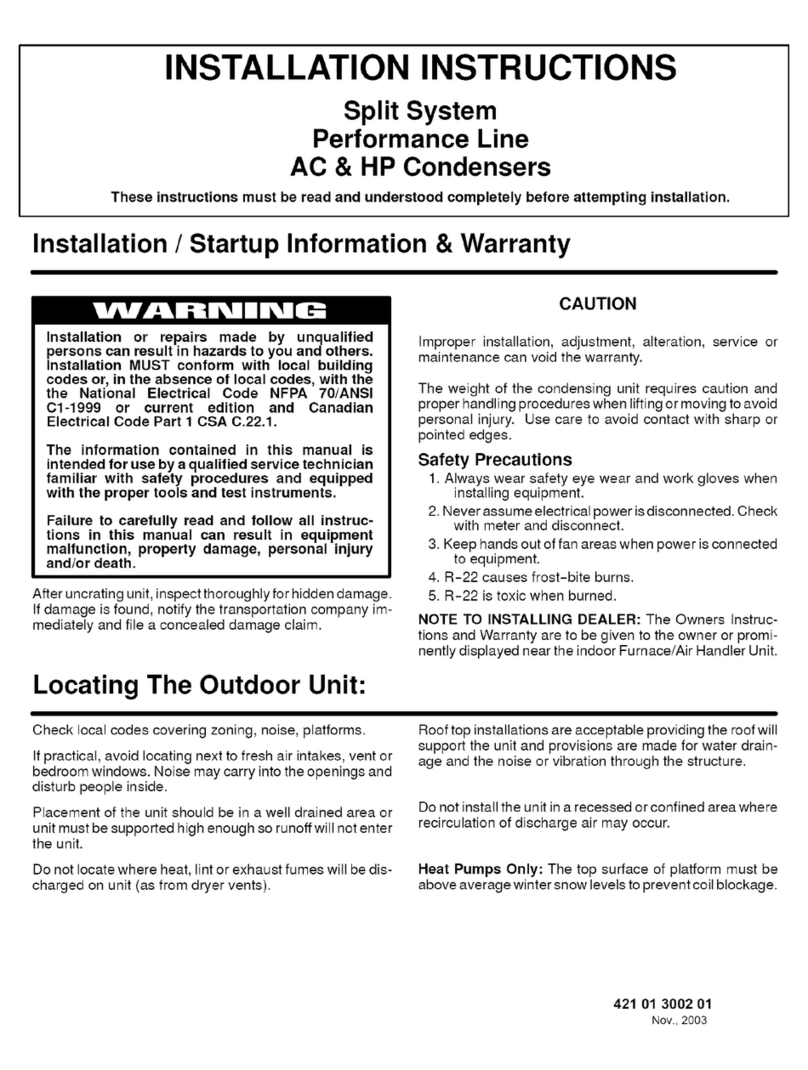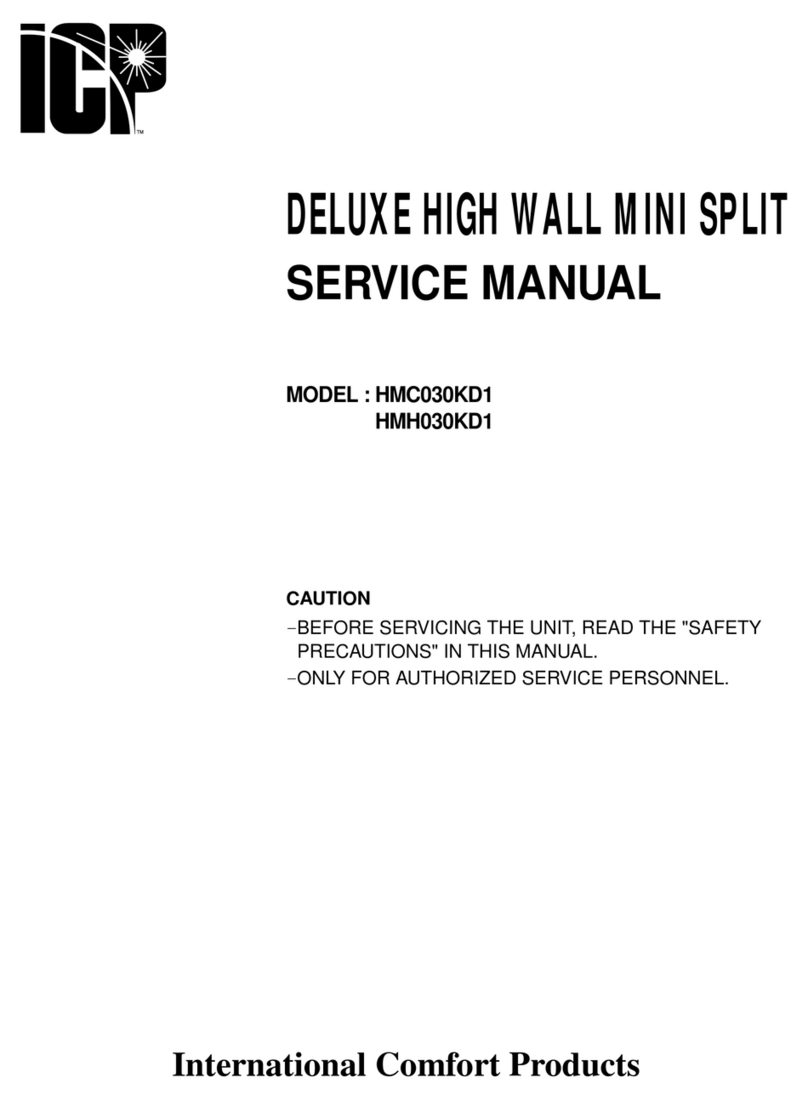4. ELECTRICAL WIRING
ELECTRICAL SHOCK HAZARD.
Failure to follow this warning could result in personal
injury, death and/or property damage.
The unit cabinet must have an uninterrupted,
unbroken electrical ground to minimize the possibility
of serious injury if an electrical fault should occur.
This ground may consist of an electrical wire
connected to the unit ground lug in the control
compartment, or conduit approved for electrical
ground when installed in accordance with National
Electric Code (NEC) NFPA 70, National Fuel Gas Code
NFPA 54-2005/ANSI Z223.1-2005 and local electrical
codes. In Canada, follow Canadian Electrical Code
CSA (Canadian Standards Association) C22.1 and
local electrical codes.
REDUCED EQUIPMENT LIFE HAZARD
Failure to follow these precautions could result in
damage to the unit being installed.
1)Makeall electricalconnections inaccordance with
NationalElectriccode (NEC)NFPa70 andlocalelectrical
codes governing such wiring. In Canada, all electrical
connections must be in accordance with CSA standard
C22.1, Canadian Electrical Code Part 1, and applicable
local codes. Refer to unit wiring diagram.
2) Use only copper conductor for connections
betweenfield-supplied electricaldisconnectswitch and
unit. DO NOT USEALUMINUM WIRE.
3) Be sure that high-voltage power to unit is within
operating voltage range indicated on unit rating plate.
4) Donot damage internalcomponentswhen drilling
through any panel to mount electrical hardware,
conduit, etc. Consult local power company for
correction ofimproper voltage and/orphase imbalance.
Disconnect Switch
The unit must have separate electrical service with a
field-supplied, waterproof, disconnect switch mounted at,
orwithin sight from, the unit. Refer tothe unit rating plate for
maximum fuse/circuit breaker size and minimum circuit
amps (ampacity) for wire sizing.
Ground Connections
Do NOT complete line voltage connections until unit is
permanently grounded. All line voltage connections and the
ground connection MUST be made with copper wire.
A ground lug is installed in the control box area for the
ground connection. Use a copper conductor of the
appropriate size from the unit to a grounded connection in
the electrical service panel or a properly driven and
electrically grounded ground rod. See warning above.
Line Voltage Wiring -(Wiring Diagrams page 12 & 13)
Connections for line voltage are made in the unit control box
area. Refer to wiring diagram located on the Burner Access
panel. For access, remove the burner access panel.
1. Run the high voltage (L1, L2) and ground leads into the
control box.
2. Connect ground lead to chassis ground connection.
3. Connect L1 to pressure lug connection 11 of the
compressor contactor.
4. Connect L2 to pressure lug connection 23 of the
compressor contactor.
Thermostat /Low Voltage Wiring
Location of the thermostat has an important effect on home
comfort. FOLLOW THE THERMOSTAT INSTRUCTION
MANUAL FOR CORRECT LOCATION, MOUNTING, AND
WIRING.
For 2 to 3-1/2 Ton Models Only:
A single stage thermostat is required for proper operation.
Thermostat must have the following terminals: "R', "W',
"Y", and "G'. Some electronic thermostats use low voltage
from the unit for power for temperature display and
programming. These electronic thermostats will have a'C"
terminal. The outdoor unit has color-coded wires for easy
connection. Using wire nuts, follow FIGURE 3 for proper
connections:
FIGURE 32 to 3-1/2 Ton Thermostat Connections
_!_ REO
\ J
K J i',
Thermostat and subbase Unit Control Power
For 4 to 5 Ton Models Only:
A two-stage thermostat is required for proper operation.
Thermostat should have the following terminals: "R",
"W/W1 ", "Y1", "Y2", and "G'. Some electronic thermostats
use low voltage from the unit for power for temperature
display and programming. These electronic thermostats
will have a "C" terminal. The outdoor unit has color-coded
wires for easy connection. Using wire nuts, follow FIGURE
4 for proper connections:
FIGURE 4 4 to 5 Ton Thermostat Connections
©
Cv
©
Thermostat and subbase Unit Control Power
